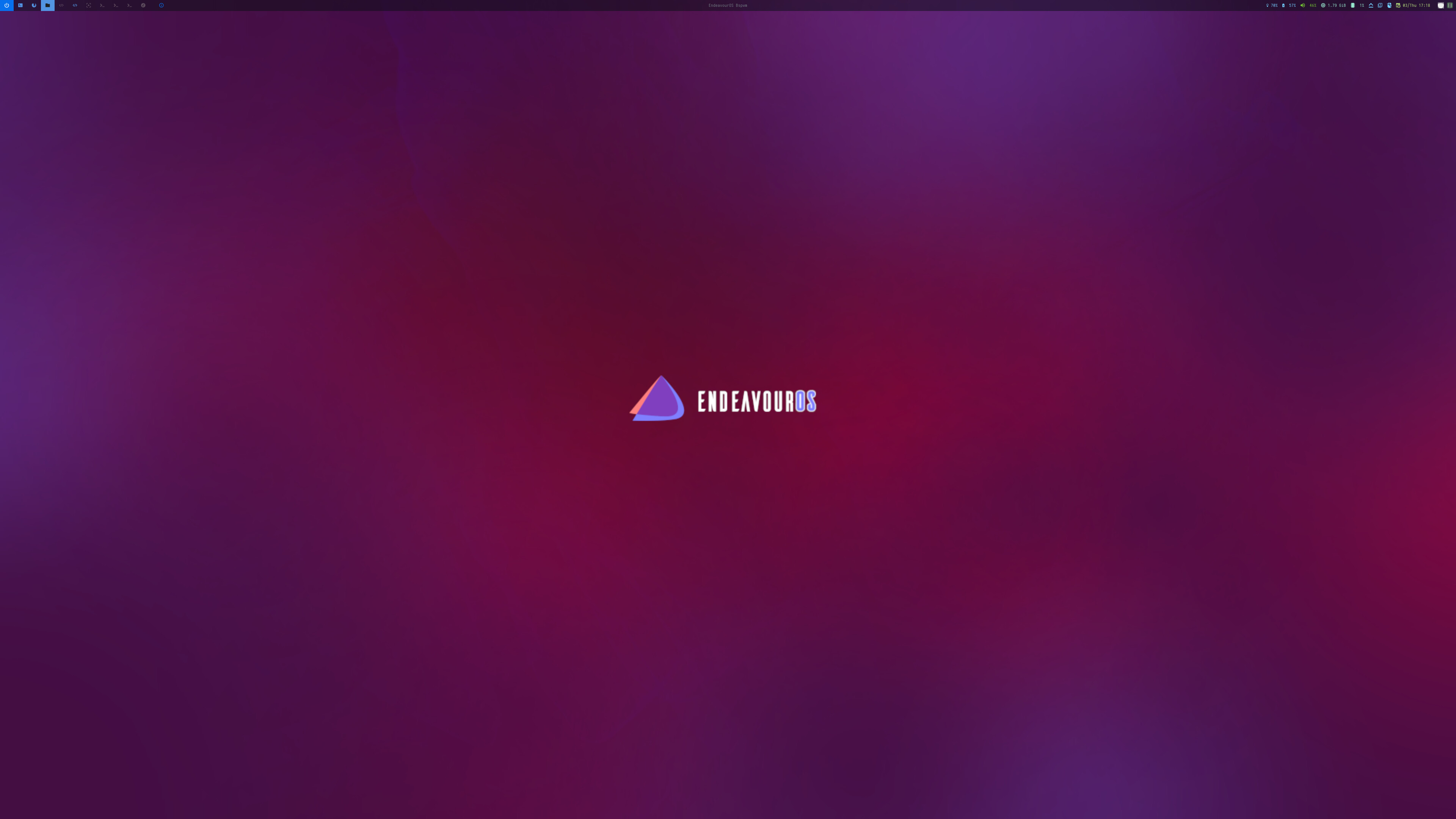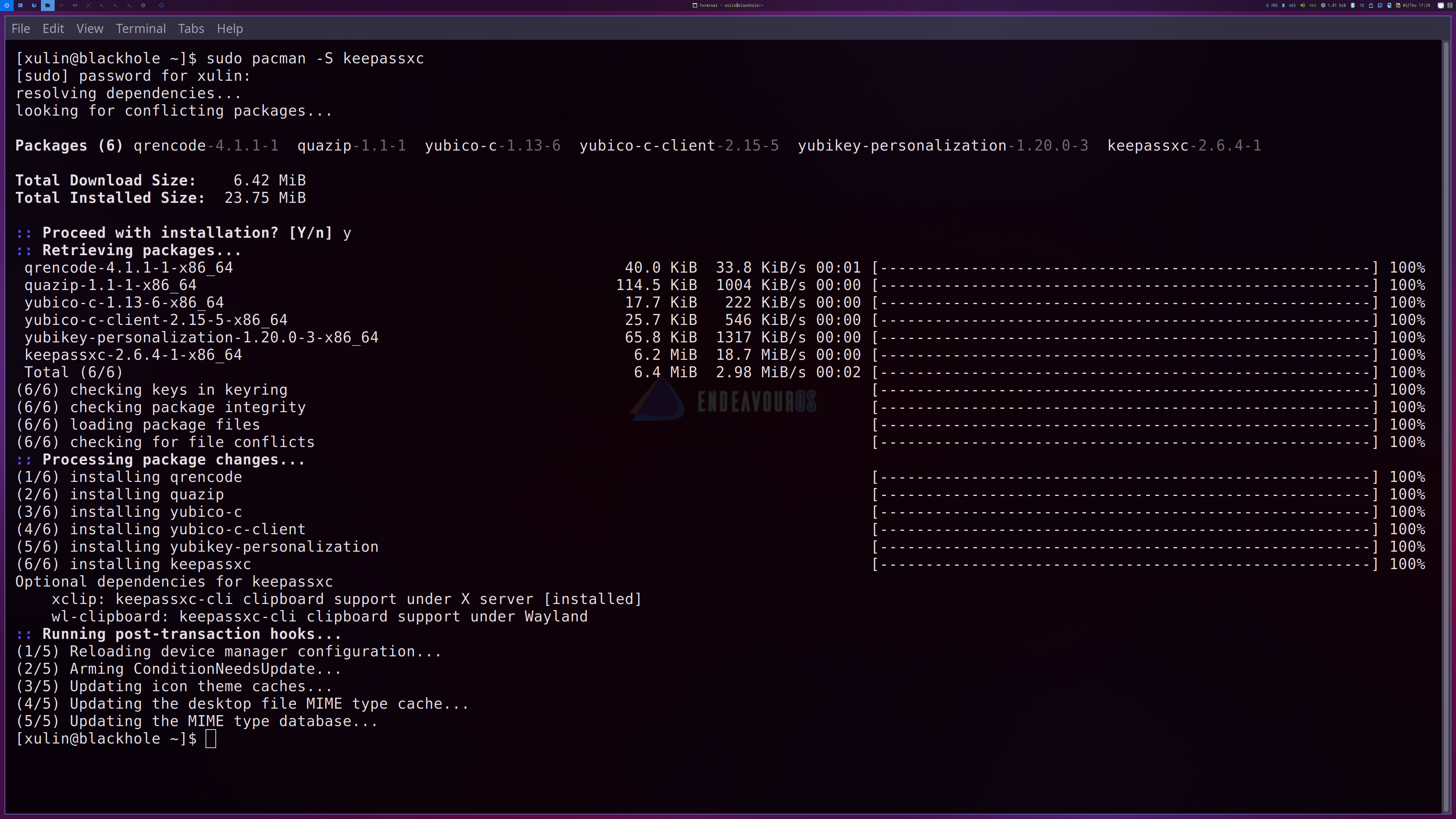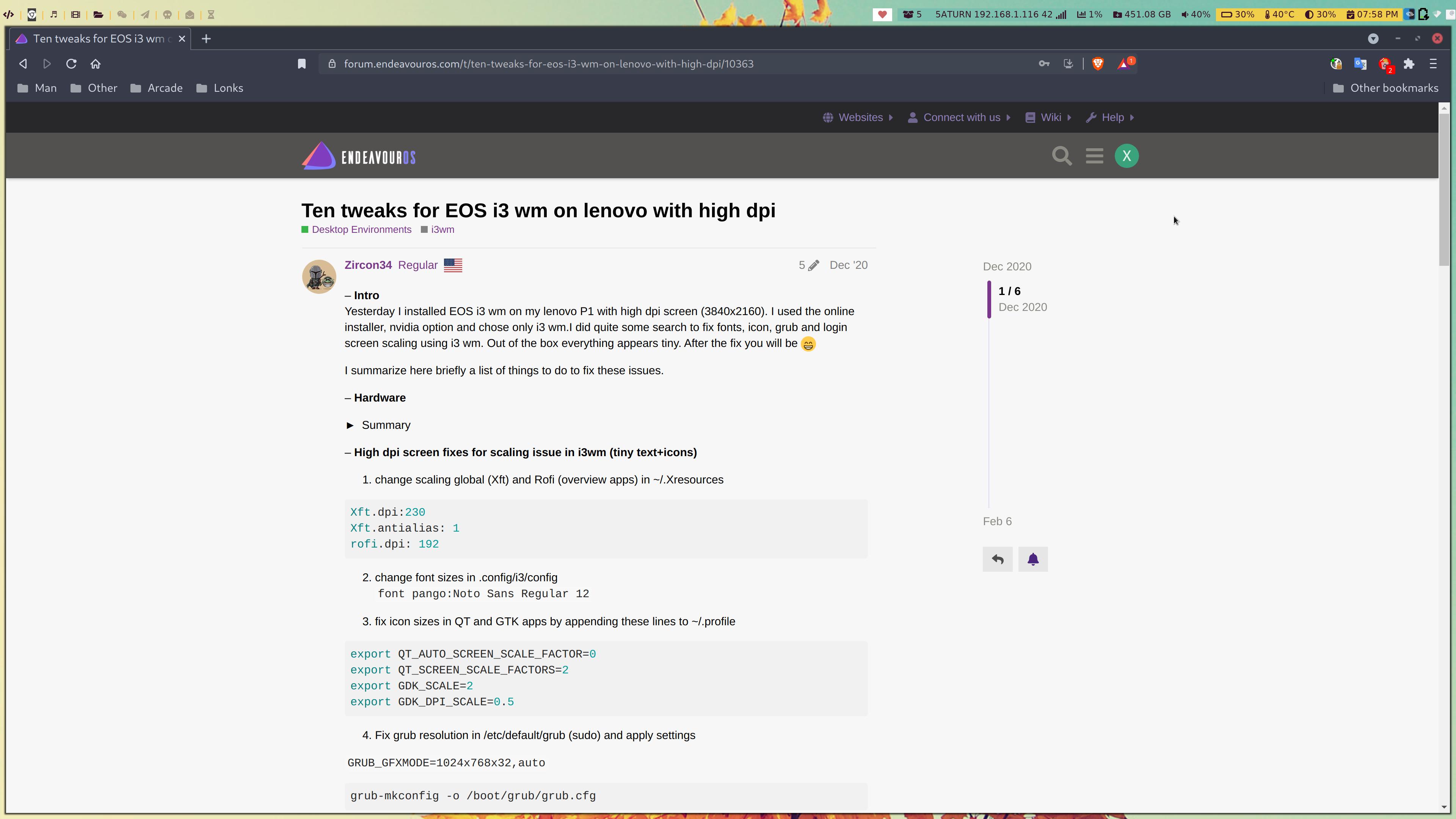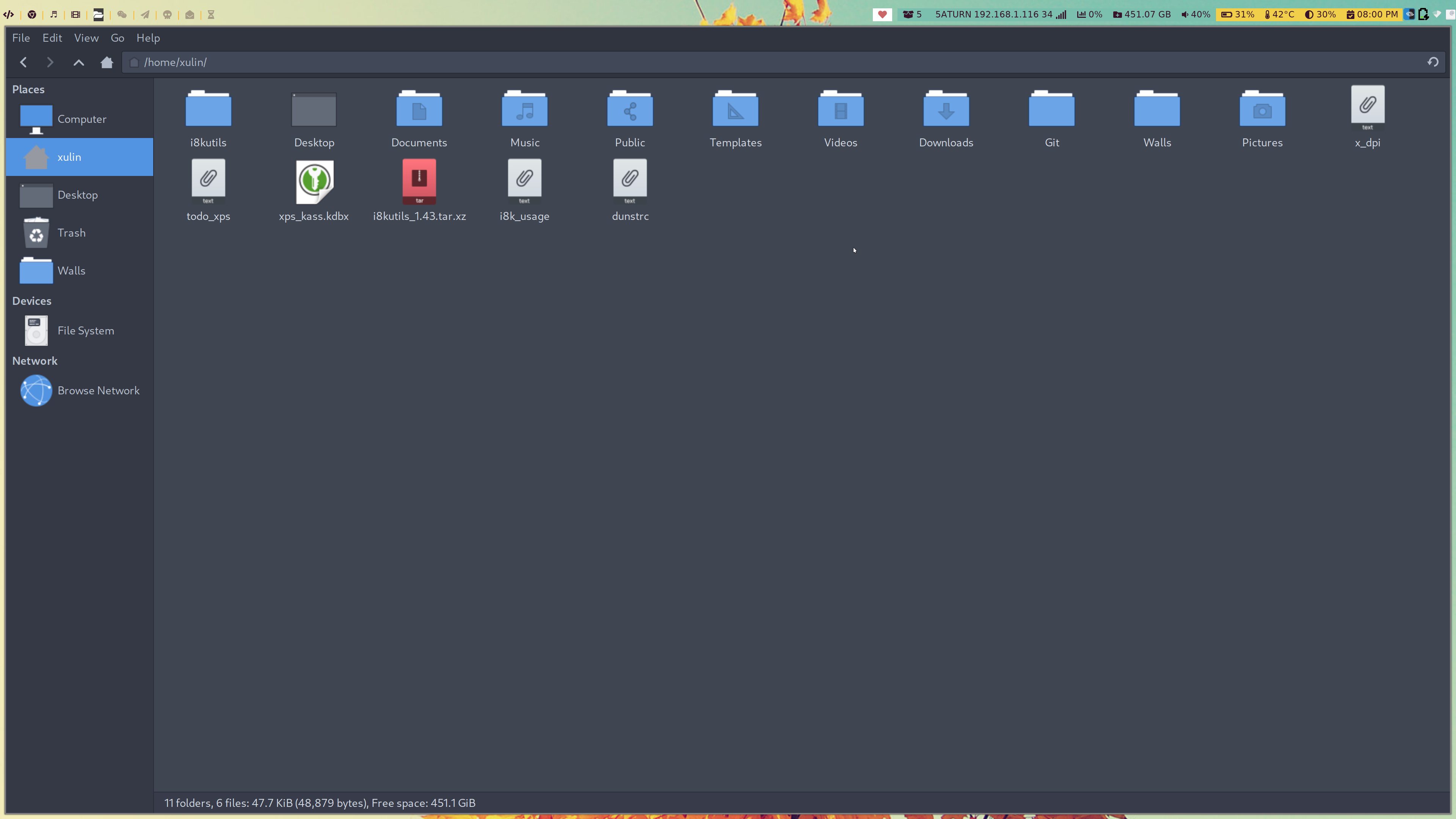First off: Hello community! Glad to be here with all the cool people from the forums.
As the title implies, having a few issues with the way scaling is being done on my laptop.
The XPS 15 model I recently got comes with an OLED 4K display (which is stunning by the way while watching movies), but well, thing is: the icons/text doesn’t really scale that well.
Also using BSPWM community version by the way.
First problem is the Kernel Buffer and GRUB display: it’s all tiny!
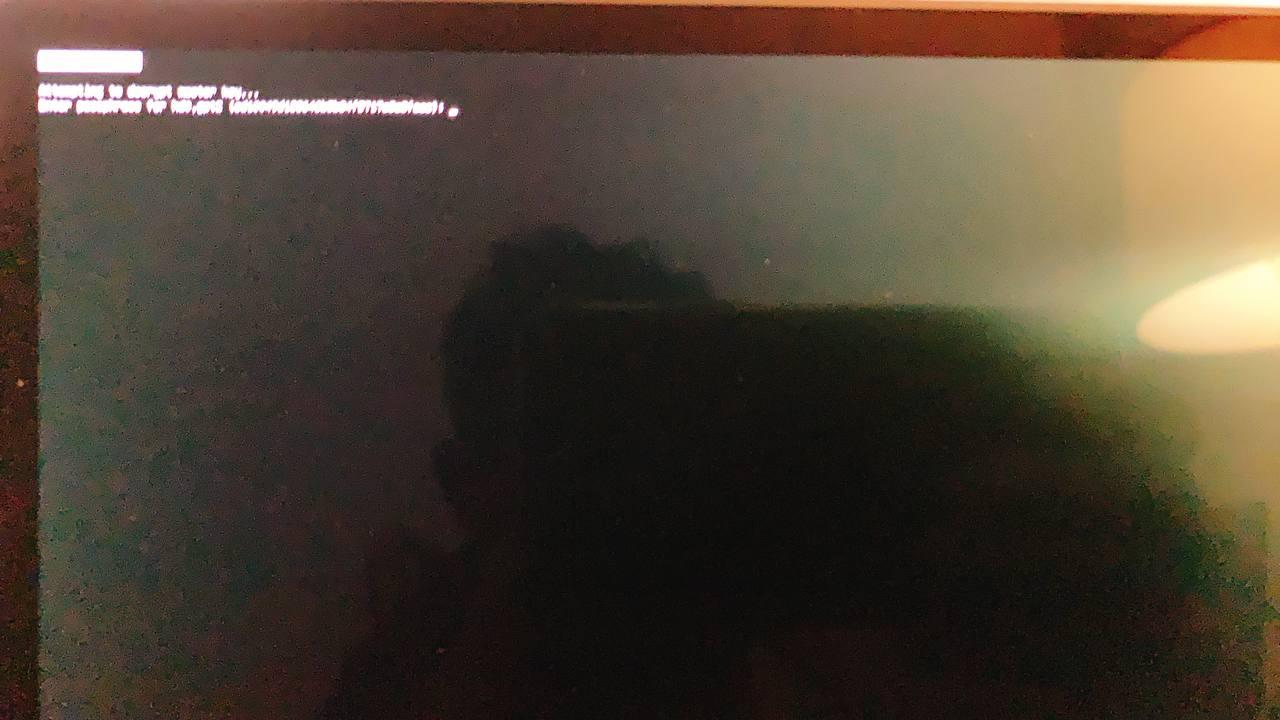

Sorry for the Potato Quality pics here.
While doing some research in the forum, found a similar thread here.
So, my options are as of now 2 that I can see:
1 - Use a DE that does support scaling properly like KDE or XFCE, for example, or…
2 - Make a Xorg.conf to bring down the resolution down to 1920x1080.
For the Kernel Buffer/GRUB problem the wiki entry about Framebuffer is very detailed, however, haven’t got it to work (yet).
For the second problem (Resolution), I’ll try installing the NVIDIA driver and see if I can bring the resolution down later with a xorg.conf to override the display.
(Haven’t installed Optimus either).
But, as always, what would you guys recommend in this case?
Not sure if anyone here uses a 4K or close display as well and has tackled those issues before. Some pointers would be appreciated.
I’ll leave you with my Inxi -FGz:
System: Kernel: 5.12.8-arch1-1 x86_64 bits: 64 Desktop: bspwm 0.9.10 Distro: EndeavourOS
Machine: Type: Laptop System: Dell product: XPS 15 7590 v: N/A serial: <filter>
Mobo: Dell model: 018W12 v: A06 serial: <filter> UEFI: Dell v: 1.8.1 date: 07/03/2020
Battery: ID-1: BAT0 charge: 65.7 Wh (69.8%) condition: 94.1/97.0 Wh (97.0%) volts: 11.7 min: 11.4
CPU: Info: 6-Core model: Intel Core i7-9750H bits: 64 type: MT MCP cache: L2: 12 MiB
Speed: 800 MHz min/max: 800/4500 MHz Core speeds (MHz): 1: 800 2: 800 3: 800 4: 800 5: 800 6: 801 7: 800 8: 800
9: 803 10: 800 11: 800 12: 800
Graphics: Device-1: Intel UHD Graphics 630 driver: i915 v: kernel
Device-2: NVIDIA TU117M [GeForce GTX 1650 Mobile / Max-Q] driver: nouveau v: kernel
Device-3: Microdia Integrated_Webcam_HD type: USB driver: uvcvideo
Display: x11 server: X.Org 1.20.11 driver: loaded: intel,modesetting unloaded: fbdev,vesa resolution: 3840x2160
Message: Unable to show advanced data. Required tool glxinfo missing.
Audio: Device-1: Intel Cannon Lake PCH cAVS driver: snd_hda_intel
Sound Server-1: ALSA v: k5.12.8-arch1-1 running: yes
Sound Server-2: PulseAudio v: 14.2 running: yes
Network: Device-1: Intel Wi-Fi 6 AX200 driver: iwlwifi
IF: wlan0 state: up mac: <filter>
Bluetooth: Device-1: Intel AX200 Bluetooth type: USB driver: btusb
Report: This feature requires one of these tools: hciconfig/bt-adapter
Drives: Local Storage: total: 476.94 GiB used: 13.58 GiB (2.8%)
ID-1: /dev/nvme0n1 vendor: Samsung model: PM9A1 NVMe 512GB size: 476.94 GiB
Partition: ID-1: / size: 476.64 GiB used: 13.58 GiB (2.8%) fs: btrfs dev: /dev/dm-0
ID-2: /boot/efi size: 299.4 MiB used: 708 KiB (0.2%) fs: vfat dev: /dev/nvme0n1p1
ID-3: /home size: 476.64 GiB used: 13.58 GiB (2.8%) fs: btrfs dev: /dev/dm-0
ID-4: /var/log size: 476.64 GiB used: 13.58 GiB (2.8%) fs: btrfs dev: /dev/dm-0
Swap: ID-1: swap-1 type: file size: 8 GiB used: 0 KiB (0.0%) file: /swap/swapfile
Sensors: System Temperatures: cpu: 36.0 C mobo: N/A gpu: nouveau temp: 30.0 C
Fan Speeds (RPM): cpu: 0 fan-2: 0
Info: Processes: 252 Uptime: 25m Memory: 30.98 GiB used: 1.03 GiB (3.3%) Shell: Bash inxi: 3.3.03




